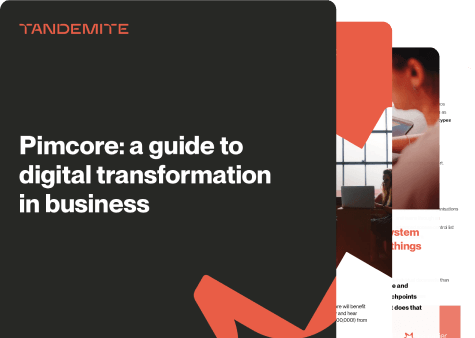Why an ERP is not a PIM, and how you can use this knowledge to optimize your sales efforts

You’ve already invested in ERP, so why add another system? Organizations that own ERP software often try to stretch its functionality and make it work for managing product-related data. On the surface, it makes sense: the ERP is already in place, so why not use it to handle product information as well? It feels convenient, and there’s a comfort in sticking with familiar software.
But here’s the issue – convenience doesn’t always translate to efficiency or effectiveness. Using an ERP for product information management leads to limitations, data silos, and ultimately, missed opportunities to engage customers.
We see this scenario all the time with our clients. As a PIM implementation partner, we’ve helped many businesses transition from using their ERP as a PIM. These clients often come to us because they’ve reached a breaking point.
Let’s break down why your ERP shouldn’t be doing your PIM’s job and why understanding the difference can save your organization time, money, and headaches.
First up, what PIM is, and what PIM isn’t!
What is PIM?
A Product Information Management (PIM) system:
- Centralizes all your product data in one place, making it easy to manage and update.
- Manages product relationships.
- Enriches product information with images, descriptions, technical specs, and SEO-optimized content.
- Distributes consistent and accurate product data across multiple sales channels (e.g., e-commerce, marketplaces, print).
- Ensures data quality.
- Supports localization for global markets.
What PIM doesn’t do!
PIM is not an inventory manager or financial tool. It doesn’t handle stock levels, live pricing, or order statuses. PIM only stores one kind of data: either “hot” or “cold”, not both. Looking for more info? Visit our blog for a full explanation.
5 reasons why ERP systems are not suited for PIM tasks
Reason #1: ERP systems focus on operations, not product data management
The company’s enterprise resource planning system knows where every piece of your inventory is, how much it costs, and when the next shipment is coming. This is data that keeps your business running.
ERPs excel at automating workflows related to finance, human resources, procurement, and inventory management.
But…
When it comes to consumer-facing product information (something that convinces people to hit “Add to cart”), it isn't their strong suit. Why? Because they were never designed for that. Especially if your business needs to support hundreds or thousands of SKUs with dynamic attributes.
The reports highlight that 63% of organizations struggle with product information management due to the limitations of their ERP systems.
PIM solutions, on the other hand, focus on collecting, standardizing, and distributing comprehensive product data. They offer the flexibility needed to manage and update complex product hierarchies, attributes, and variants without bogging down your operations.
As a result, PIM helps organizations manage product catalogs more efficiently and enables consistent and engaging customer experiences across multiple sales channels.
Ready to dive into better product content management? Let’s connect to discuss your business needs in detail.
Reason #2: PIM centralizes and enriches product data, ERP doesn’t
PIM systems specialize in managing and enriching every aspect of product data, from high-resolution images and product descriptions to multilingual content.
This is especially crucial for businesses with extensive product catalogs or those selling on multiple e-commerce platforms or marketplaces.
An ERP can’t deliver this level of data “richness”. These systems store limited data fields, typically focusing on inventory counts, SKU numbers, and supplier details.
Reason #3: Omnichannel consistency: A PIM must, an ERP limitation
One of the biggest challenges today is managing product information across multiple channels.
Let that sink in for a second.
Experts say that retailers can lose between 10% and 30% of sales if they fall short of meeting omnichannel shopping standards.
Today’s customers expect consistent product information wherever they engage with your brand (across your website, social media, marketplace listings, or in-store displays). Yet, ERPs were not intended to manage data distribution on such a large scale.
In contrast, PIMs are designed with omnichannel distribution in mind. So, you can update information once and let the PIM handle the rest. It also allows you to tailor it for different touchpoints.
Your product data remains accurate and consistent, no matter where it appears. Less hassle, fewer errors.
Reason #4: Data quality and governance are superior in PIM
One small error in a product spec can mean angry customers, negative reviews, and lost sales. It’s the silent killer of conversions.
ERPs lack robust tools for governance and maintaining data quality, such as validation rules, completeness scoring, or duplicate detection. They help manage stock levels with precision and focus on operational efficiency, not on creating data that converts browsers into buyers.
PIM systems give you control over data governance. They are equipped with features to manage data accuracy, completeness, and compliance with industry standards, making your marketing and sales teams more efficient and effective.
This not only reduces errors but also boosts customer confidence and satisfaction.
Interested in cleaner, more reliable product data? Let’s get started on a PIM implementation.
Reason #5: ERP cannot simplify the localization process
If your business operates in multiple regions, you know the headache of translating and localizing product content. ERPs don’t offer adequate support for multi-language management.
PIM software solves this by providing built-in tools for translations, regional variations, and currency conversions, ensuring that your product data is market-ready worldwide.
Moving product data from ERP to PIM: Common (and necessary) practice
At Tandemite, we’ve helped many clients who thought their ERP could do it all. Clients often find themselves forcing attributes into fields not designed for product data, leading them to look for a better solution.
Helping businesses move their product data from ERP to a dedicated PIM system, like Akeneo or Pimcore, is something we do regularly, and we’ve developed strategies to make this transition seamless.
Learn more about how these two product information management systems compare by visiting this link.
Our job is to free up their ERP for what it does best – managing operational data – and let the PIM do what it’s designed for: centralizing, enriching, and distributing product information effectively across all channels.
And once they make the switch, it’s a game-changer. Want personalized advice for your business? Get your questions answered today!
Conclusion: ERP and PIM work better together
Remember: ERPs and PIMs are complementary, not interchangeable. Your ERP is a powerful tool for managing business processes, but it’s not a one-size-fits-all solution for product information.
No one’s saying to ditch your ERP. It’s a crucial part of your operations. ERPs and PIMs serve different purposes. They support your organization in distinct ways within the broader product landscape. It’s about using the right tool for the right job. Let ERP systems do what they’re meant for, and let PIM systems handle their own tasks. Understanding this distinction can save your business from data chaos and missed opportunities.
By implementing a PIM system alongside your ERP, you can optimize your product data management, reduce time-to-market, and deliver a better customer experience. Your ERP handles the logistics and stock updates, while your PIM brings your product data to life for customers. Connecting them allows each to play to its strengths.
So, if you’re still trying to make your ERP do a PIM’s job, think of it like trying to run a marathon in flip-flops. Technically, you could do it, but wouldn’t it be better to wear proper running shoes? Make the leap to a dedicated PIM solution and start seeing the difference in your product information management.
Want to learn more about how a PIM system can benefit your organization? Contact us today for a tailored consultation or sign up for a demo! Start here to get a customized plan for your business.




